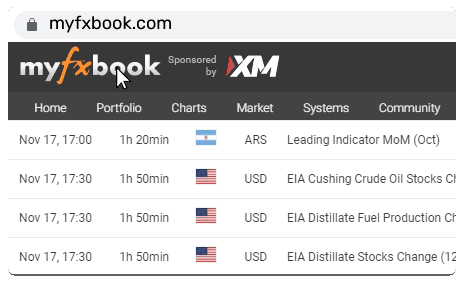Dollar Slips As Longest-ever Federal Shutdown Ends

(RTTNews) - The U.S. Dollar declined during the week ended November 17 as the longest ever shutdown of the U.S. government came to a close. The data backlog attributed to the shutdown spurred uncertainty about the actual economic situation. The dollar declined despite markets toning down expectations of a December rate cut by the Federal Reserve.
The greenback declined against the euro, the British pound, the Australian Dollar, the Swedish krona, the Canadian dollar as well as the Swiss franc. The U.S. dollar however held firm against the Japanese yen which weakened amidst Japanese Prime Minister's comments indicating preference for slow interest rate hikes by the Bank of Japan. The Dollar Index which measures the Dollar's strength against a basket of 6 currencies dropped more than a quarter percent during the past week.
From the level of 99.60 on November 7, the Dollar Index slipped 0.30 percent in a week's time. The Index which had touched a weekly high of 99.74 on Monday and Tuesday slipped to the weekly low of 98.99 recorded on Thursday and Friday in the aftermath of the shutdown breakthrough. The Index however recovered on Friday and closed the week's trading at 99.30.
Amidst the dollar's weakness, the EUR/USD pair rallied 0.48 percent during the week ended November 14. From the weekly low of 1.1540 touched on Monday, the pair climbed to a high of 1.1656 on Thursday. The pair eventually closed at 1.1621, versus 1.1566 a week earlier. Data released during the week had shown employment data on expected lines.
The British pound also edged up against the greenback during the week ended November 14. The GBP/USD pair which had closed at 1.3161 on November 7 gained 0.09 percent during the week ended November 14 to close at 1.3173. The weekly trading range was wider, between a low of 1.3083 recorded on Wednesday and a high of 1.3217 recorded on Thursday. Data released during the week had shown the British economy's growth unexpectedly declining in September. Markets had expected a flat reading.
The Australian Dollar jumped 0.66 percent against the U.S. Dollar during the past week amidst an improved employment update. Data released during the week showed Australia's seasonally adjusted unemployment rate declining to 4.3 percent in October from September's near four-year high of 4.5 percent. Markets had anticipated a decline to 4.4 percent. The pair rose from the level of 0.6494 recorded on November 7 to close the week ended November 14 at 0.6537. During the week, the pair oscillated between a low of 0.6488 recorded on Monday and the high of 0.6582 recorded on Thursday.
The U.S. Dollar surged against the Japanese Yen during the week ended November 14 amidst comments from Japanese Prime Minister favoring slow rate hikes. The USD/JPY pair closed the week at 154.55 versus 153.43 a week earlier, registering a gain of 0.73 percent. The pair ranged between the low of 153.32 recorded on Monday and the high of 155.06 recorded on Wednesday.
The 6-currency Dollar Index has strengthened as markets brace for the release of a backlog of economic data as well as future data prints. It is currently trading at 99.37 versus 99.30 at close on Friday. Recent comments from Fed officials that downplayed the likelihood of a Fed rate cut in December amidst worries about inflation and signs of relative stability in the labor market supported the Dollar.
The EUR/USD pair is currently at 1.1601 versus 1.1621 on Friday. The GBP/USD pair is trading at 1.3164 as compared with the level of 1.3173 on Friday. The AUD/USD pair has slipped to 0.6519 from 0.6537 at close on Friday. Amidst continuing weakness in the Japanese yen, the USD/JPY pair has rallied to 154.78 from the level of 154.55 recorded at the end of the previous week.


















